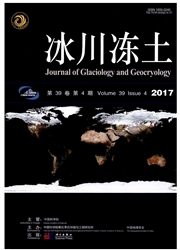

 中文摘要:
中文摘要:
以大通河流域为研究区域,利用1985年和2005年土地利用数据,结合SWAT分布式水文模型定量评估了流域土地利用/覆被变化的水文效应。结果表明:1985-2005年大通河流域的土地利用变化主要表现为草地向耕地、居工地转变,草地所占比例由46.7%骤降至20.9%,而耕地面积由1985年的1065.8km2增加到2005年的3243km2;相较于1985年的土地利用情景,2005年土地利用情景下的模拟的多年平均径流增加了1.92×108m^3,由于上中下游主要的土地利用/覆被变化不同,导致流域径流变化增加程度由西北至东南逐渐增大;大通河流域年径流的增加主要表现为汛期径流增加,讯期月平均径流增幅达到了0.40×108m3·mon^-1;非汛期径流则呈不明显减小趋势,平均降幅为0.024×108m3·mon^-1。合理规划大通河流域土地利用方式,提高水源区涵养能力,对流域水资源可持续发展具有重要意义。
 英文摘要:
英文摘要:
Taking Datong River basin as a study area, using SWAT model, the hydrological effects in the basin was quantitatively analyzed based on the land-use/cover change scenarios in 1985 and in 2005. The results showed that: (1) during 1985-2005, the most evident change of land-use was grassland shifting to farmland and construction sites. As a result, the grassland proportion greatly reduced, from 46.7% to 20.9%, and the cultivated land area from 1 065.8 km in 1985 increased to 3 243 km in 2005; (2) compared with the land-use situation in 1985, the simulated multi-year average runoff of 2005 increased 1.92×108 m, with the increasing gradually from northwest to southeast due to the different in main land-use among the upstream, midstream and downstream; (3) annual runoff increase was mainly in the flood season, with a rate of 0.40×108 m·mon^-1, while in non-flood-season runoff decreased with a rate of 0.024×108 m·mon^-1. Therefore, it is of great importance to make reasonable land-use plan and to improve the ability to conserve water resources for sustainable development in the basin.
 同期刊论文项目
同期刊论文项目
 同项目期刊论文
同项目期刊论文
 期刊信息
期刊信息
